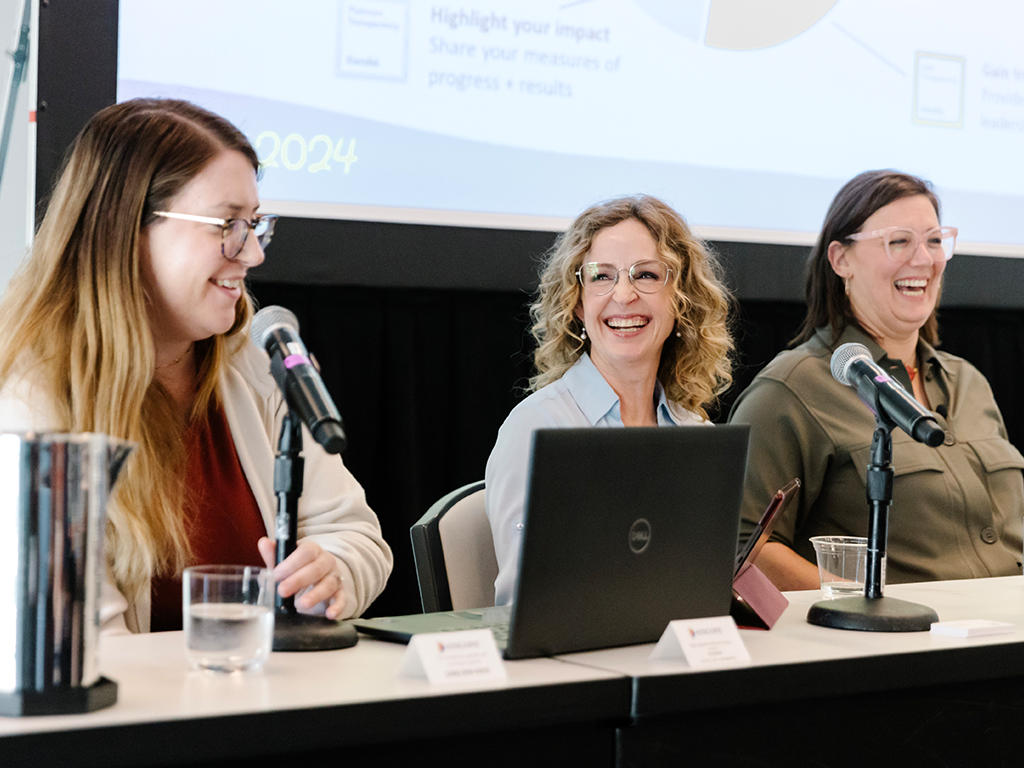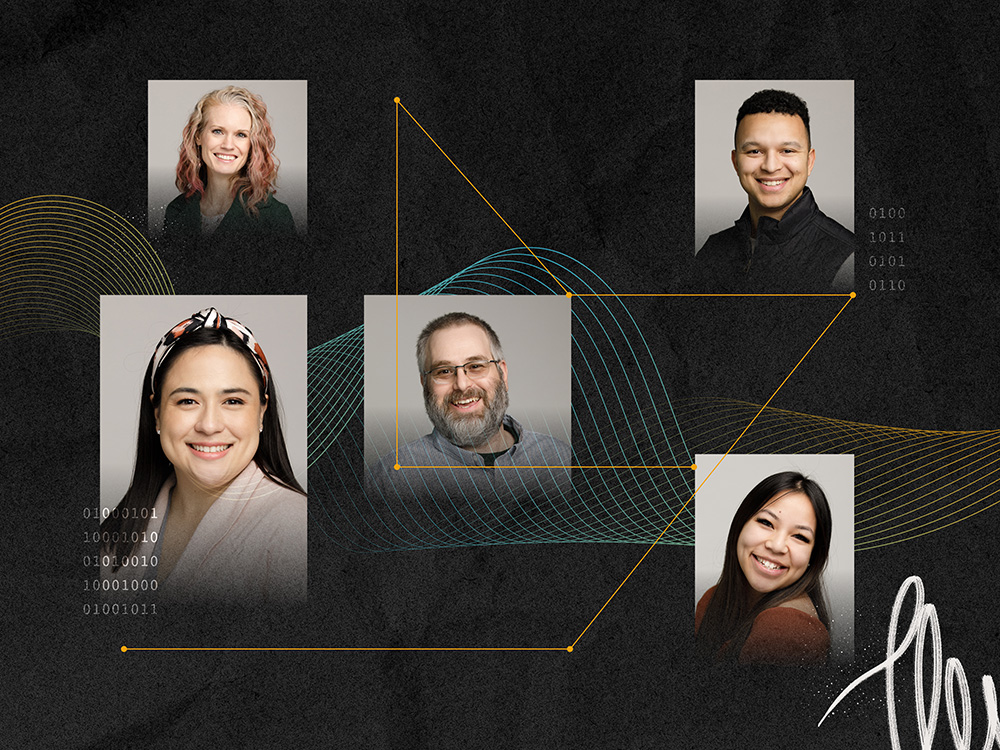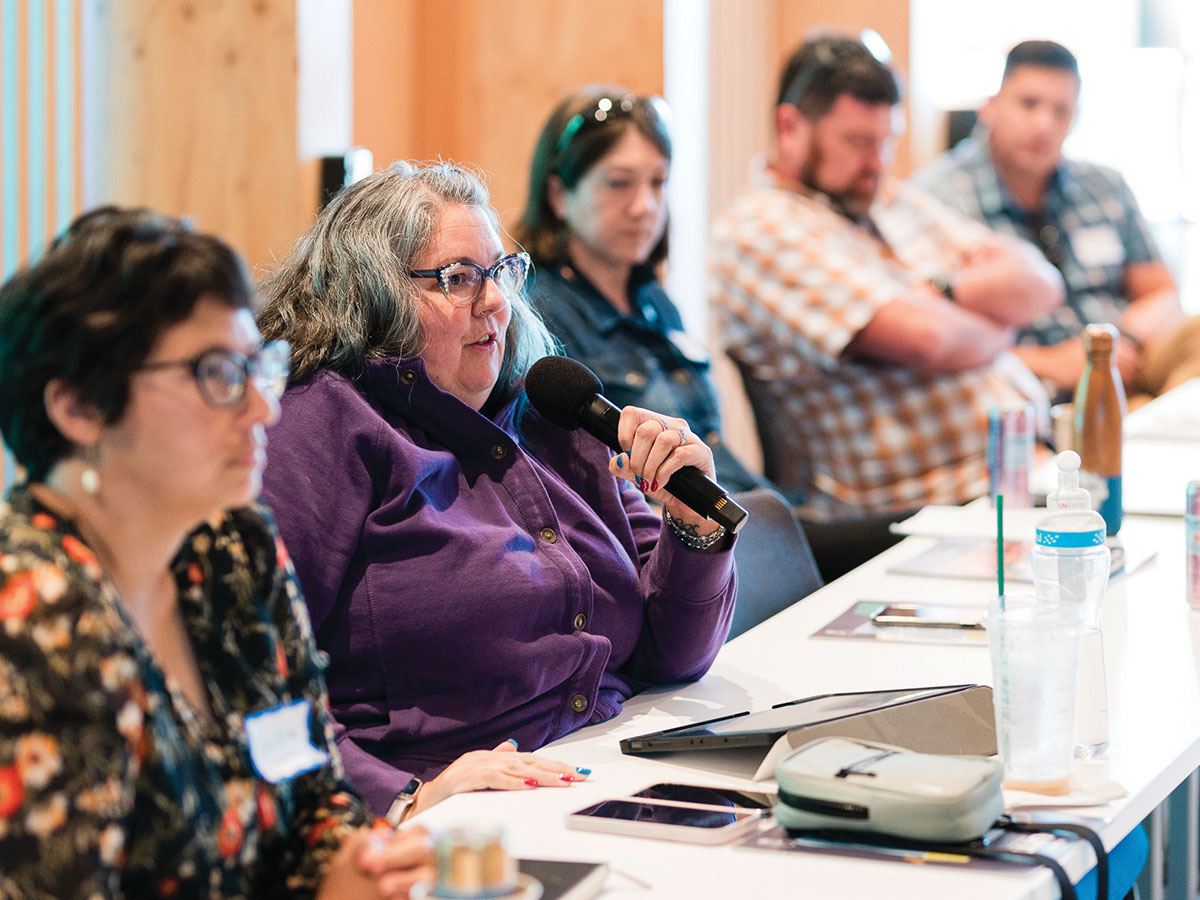Disrupting Grantmaking: Matchmaking, algorithms, proposal-less programs, and the future of philanthropy

Philanthropy is one of the only sectors and aspects of our lives that has not been completely transformed by technology. The ways we communicate with each other, consume entertainment and news, go shopping, and date have completely and radically evolved, (particularly since I traded my Discman for an iPod, which is still the most persuasive argument for the existence of magic.)
And yet, how we funders solicit and review proposals in the field, pit applicants in competition against each other, and make selections has remained fundamentally unchanged for over 100 years.
Sure, we have moved into the Digital Age, and our applications are online, and we send emails instead of letters. Way to go, us! (And how many of those online applications still ask for a fax number?) Yet, really, nothing has changed; at least not in the way that we can delegate hummus restocking decisions to our smart refrigerators.
So, why hasn’t philanthropy significantly evolved?
One thought is that systems that seek to retain control will create structures to reinforce those systems of control. Another is that once you start questioning why we do things a certain way, you challenge people’s roles and raisons d’être. When algorithms can choose grantees better than humans, will most foundation staff go the way of switchboard operators, taxi drivers, and travel agents?
Perhaps there’s a simpler answer: There has been no business need to change.
What external forces drive change in philanthropy? There’s no commercial or competitive reason to innovate, no better mousetrap foundations need to sell. Many foundations have inward-facing and self-protective cultures and aversion to risk, from the board down. Without strong vision or leadership in place pushing to bring about meaningful transformation, there is little-to-no incentive to rock the boat.
#DisruptPhilanthropy is happening
Disruption in philanthropy IS happening now and in a big way, but it wasn’t initiated by technology. The internal and external demand to disrupt has emerged from the pandemic and the movement for racial justice. Foundations are quickly stepping up to be responsive to this moment, and to turn a critical eye toward the structures, policies, processes, and philosophies that have contributed to and perpetuated structural racism and white supremacy. Those foundations that aren’t considering their history, wealth, privilege, and positional power are rightfully having it called out for them.
PEAK Grantmaking and others have promoted equitable practices well before this moment, but only now is there a critical mass of interest. Grants management professionals are among those leading the way to show how practices can embed equity. Yet, while we’re building something different, we’re still using the same box of LEGOs.
What if, instead, we threw those LEGOs out the window and completely reimagined our work? Here are ideas that completely do away with applications, applicant burden, and competitive processes – epitomes of lopsided power dynamics and rife with inequity – and instead introduce funders and nonprofits to each other on a more level playing field. These are based on existing models from other sectors:
Entertainment: Netflix, Spotify
After five months of lockdown, Netflix knows me better than my mom. If Netflix can say with certainty that I would like “dark, dystopian, zombie thrillers starring Air Bud” and “screwball romantic comedies directed by Werner Herzog,” surely a system could trawl a foundation’s grantmaking history and interests and make suggestions.
We see you gave $50,000 to Canadians Without Rush Albums. Would you like to consider a grant to Yes Fans Without Borders?
Like attracts Like in this algorithm, which means that biases persist. But what if you could toggle it to suggest the opposite? Or put in the parameters to help you see and fill in gaps? Or program the system to question assumptions.
You expressed less interest in renewals to large institutions. Are you sure you want to make this 14th grant to Adam’s Sea Monkey Adoption Center?
A system could curate Spotify-style “playlists” of organizations it thinks you may be interested in. “The Ones That Got Away” Spotify playlist both opens and blows my mind on the regular. The playlist suggests artists or genres I typically wouldn’t listen to (according to my listening history, which is 99% 80s New Wave), but it knows I’m open-minded enough that I’ll occasionally try something new. Once Spotify makes that introduction, I learn about the artist/genre and dig deeper (and now I know way too much about Icelandic techno). Could a grantmaking system do the same, where, based on a funder’s risk tolerance, it recommends grants outside their norm that are particularly breakthrough concepts?
The ideas are endless, so long as there’s a searchable directory of organizations with particular data sets. (Cough, Candid, cough.) If the underlying data sets include organizational size, annual budget, and leadership demographics, think about how this could make our grantmaking more equitable, widen circles of trust, and expand our horizons. Now imagine a platform that allows users to own and retain control and use of their data (such as a data trust), and is free and accessible to narrow any technological divide. Technology should be a gateway, not a gatekeeper.
Retail: Amazon
On Amazon, recommendations aren’t only based on your purchase history, but on what similar consumers have purchased, even if the products aren’t related in a close or clear way.
We see you made a grant to Strong Bitter Coffee for All. Your peer funders have also given grants to The Heartburn Association and Halitosis United.
There is still similarity bias, as well as selection bias, the halo effect of the peers we like, and issues around popularity and ranking. (I’m guilty of buying the #1 bestseller in any category 99% of the time, which is why, under quarantine, I’ve been subsisting solely on Bubly and Nutella.)
I don’t mean to imply that grantees are commodities to select from a catalog. But we can harness knowledge management, machine learning, and AI – not to buy, sell, and consume; but to connect funders, peers, and potential grantees through collective grantmaking information.
In the Netflix and Amazon models, technology could also help analyze decisions before they’re made.
We see that 93% of the grants you’re proposing to give in this cycle are to organizations without a single BIPOC director on their board.
As a thought experiment, consider what algorithms/parameters your organization would set up to align with its values and goals. How might it change if you could see the parameters and restrictions of peer funders?
Growing up, AI meant HAL and Skynet. Today, it means Alexa nudging me to buy more paper towels. What can it mean tomorrow in terms of philanthropy?
Umm… Romance: Tinder
Wait, what’s Tinder? (Reads academic articles about it.) Ah, I see.
The prior examples reflect the traditional approach of funder seeking grantee. In the Amazon model, in particular, the funders would be running the show. But what if the model shifted to a two-way system, where funders and grantees look for each other to make a love match? How does this address and flip power dynamics, shifting more power to grantseekers?
Both funders and organizations looking for funding could put in information about their missions, programs, budgets, and other useful data. There could even be fun optional quizzes or questionnaires, a la OKCupid, that help gather data on the parties to improve matches. Each party also set filters of what they’re looking for.
I’m interested in a grassroots nonprofit in Wisconsin that’s into worker’s rights. Or: I’m looking for a funder with minimal reporting requirements with a BIPOC-led Board.
Matchmaking could also be done by project, rather than by organization, with the funder entering their available budget and eligibility criteria for a project they wish to fund. Nonprofits, too, could post proposed projects and funding needs, along with whether they’re looking for partial or full funding.
The system or app could then provide suggested matches for the funder and nonprofit to… (looks up academic paper) swipe left or right. If both swipe right – voila and ooh la la!
It becomes very easy for a program officer to find new organizations to fund, but it could also generate a disproportionate amount of rejections. What if, in order to swipe left (reject), the program officer has to provide feedback to the organization? What if the system only allows a handful of matches per week, not only to avoid overwhelming the review/vetting process, but to motivate the Program Officer to give the suggested match more of a chance? (The Coffee Meets Bagel or Hinge model… according to academia.)
And what if the system could ding a funder for being too selective and persnickety? Sure, we all want to meet our unicorn, but unicorns don’t exist (except for my spouse). So, let’s display the funder’s “match rate,” giving nonprofits insight as to whether or not to bother, and to shift power away from the funders. A low match rate for a funder should be considered embarrassing and shameful, like a bad date. Who wants to date the Stinky Cheap Foundation? (Reviewing foundations Yelp-style to upend the usual power dynamic is nothing new: See GrantAdvisor.)
On a positive and more risqué note, there could be group matches, whereby funders match with each other to support a project. Or, if two groups independently fund the same organization, a chat window pops up and an introduction is made.
Banking: Venmo
Fundraising: GoFundMe
Piggybacking (and piggybanking) on that last idea, Venmo sought to bring the social to the purely transactional. Is it weird and pathetic to lurk on it and watch your friends buy each other drinks as you wonder if they lost your phone number? Of course not! And while I think of grantmaking as more than just sending money, the sending money aspect of it can be improved. For one thing, apps like Venmo are easy, safe, and immediate.
For another, you could broadcast the news. How would funder behaviors change, if grantmaking information sector-wide was shared in real time? Would another funder be less likely or more likely to fund a project that has already received support?
I posit the latter. Let’s assume that the GoFundMe/Facebook Fundraisers/crowdfunding model shows that people feel more encouraged to give when there is momentum closing in on a goal. Instead of funders coming up with projects and inviting nonprofits to apply, nonprofits could post their work that needs funding on a centralized platform and invite funders to support them. Transparency around those grants toward a goal will drive more funding. The site or app could be organized by program area, geographic area, beneficiaries, and other filters to help funders identify the projects that align with their own missions and goals.
This all sounds easy, because it is, though it would flip philanthropy on its head. Funders don’t need to create opportunities for potential grantees – the potential grantees create the opportunities for the funder. Instead of grantseekers and grantwriters searching for grants, it’s the foundation that’s seeking what’s available.
Solutions Bank is a cool next step on this journey. In 2019, the MacArthur Foundation received hundreds of proposals for the 100&Change program, with the intention of selecting a single grantee. To respect applicants’ time given the low funding rate, and to give high-ranked proposals a second chance, they teamed up with Candid to create a gallery walk of over 450 high-impact projects and invite other funders to support the unfunded proposals.
A platform like this could be used by other foundations to promote other unfunded but vetted organizations and projects, essentially creating a marketplace of projects available for crowdfunding by foundations. Imagine a time when funders don’t need to issue calls for proposals, and proposals are added directly by the organization. Foundation staff could still help (if requested) to vet, develop, review, and endorse proposals to promote their fundability to peer funders; or, better yet, for participatory groups or even the public acting on the behalf and request of funders. (See the Mott Foundation’s Focus on Flint program that had the so-obvious-now-that-we-see-it model of having Flint residents design the criteria for and vote on projects to strengthen the city’s neighborhoods.)
This is us
These models could transform philanthropy in another fundamental way: We would no longer be acting alone. The future is togetherness. I’m not drunk, you’re drunk! But seriously, however we think of technology and philanthropy, I can’t imagine a future where foundations still make grants separately and singularly. All models point to funders pooling their funds, decentralizing the decision making, and supporting projects and organizations through those pooled funds. Most importantly, those with the expertise and lived experience would be the ones moving and matching the philanthropic wealth to where it belongs. Just as collaborative platforms are predicted, there would be shared systems, shared processes, and even shared staff.
Pooled funding, in whatever form we’re familiar with now – giving circles, collaboratives, donor-advised funds, etc. – and beyond, would be the norm for philanthropy. Participatory grantmaking would be the norm. Grant recipients and other constituents with the power and voice to decide what is best for their communities would be the norm. And the tech will be there to support and drive it.
Phoney futurism
About 20 years ago, my brother called me up, excited. “Adam, guess where I’m calling you from?” he said. “I’m calling you from my couch! I just spent $2,000 on a couch that has a phone built into it!” He gushed and bragged for a few minutes, while I sat silently and confused on my own couch, having taken the call from my mobile Motorola flip phone.
I share this story not only to embarrass my sibling, but to acknowledge my future embarrassment. These ideas are based on current technology, which is already phasing into obsolescence. In just a few years, cars will drive people, all entertainment will be user-produced, and augmented reality will be so naturally woven into our lives that we won’t think twice that our contact lenses can display people’s credit scores, relationship status, and recent Tweets hovering over their heads like thought bubbles. Assuming it takes a couple of years to build out a Tinder-like grantor-grantee app, by that point would it just be a shiny new pager or couch phone?
Moving from rotary to pager to couch phone is a comfortable start. But if grants management professionals and technology experts were given the creative license and right motivations to think ahead and create something new in authentic partnership with grantees, we could transform philanthropy. And, perhaps in doing so, actualize what should be the ultimate goal of philanthropy, which is to make philanthropy itself obsolete.



